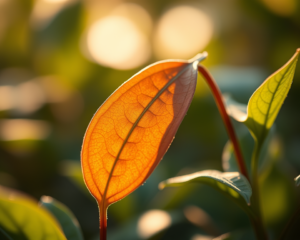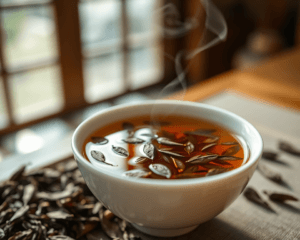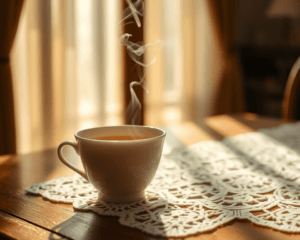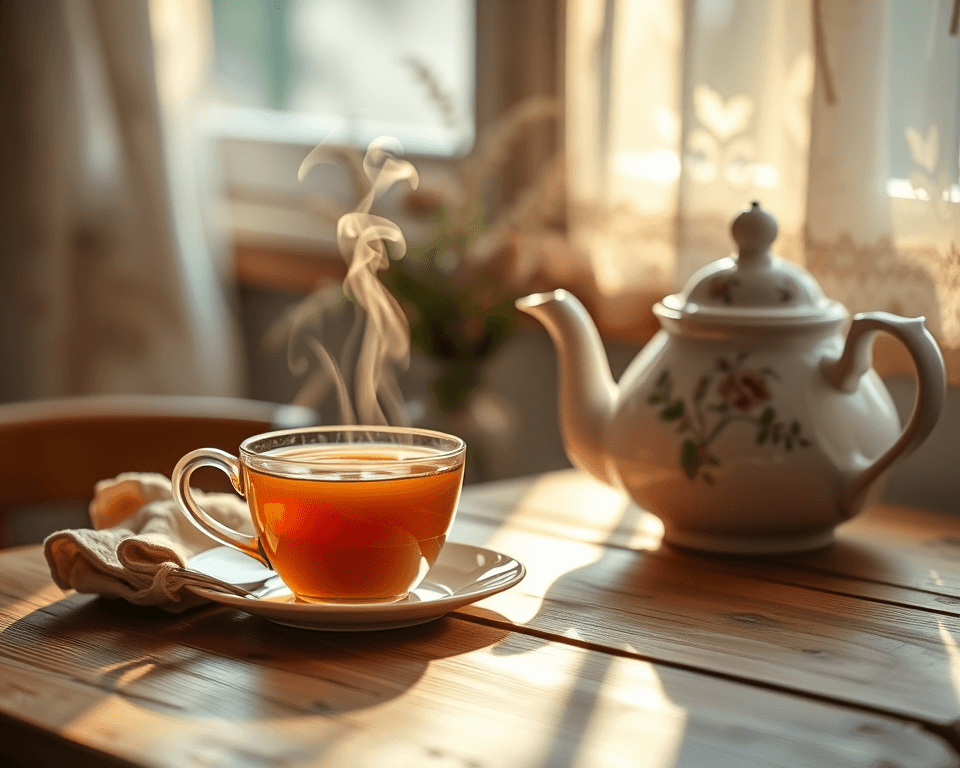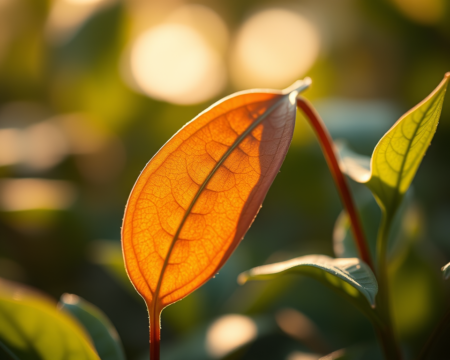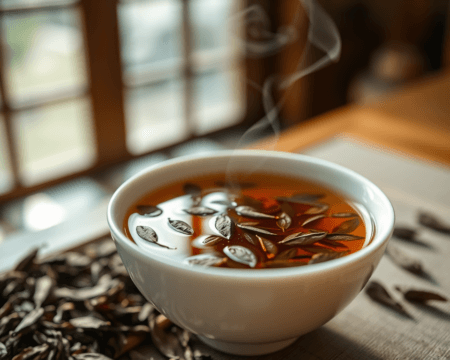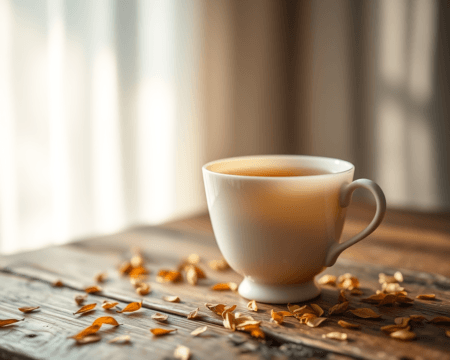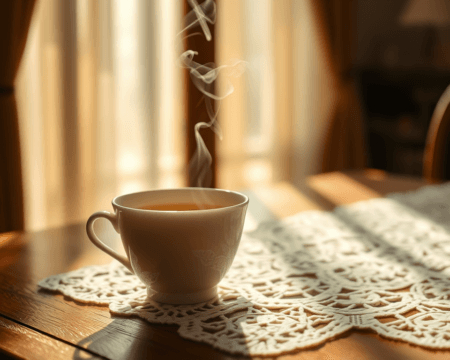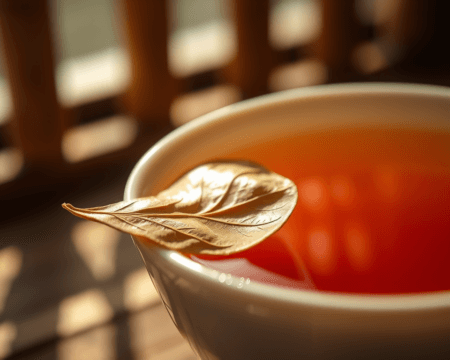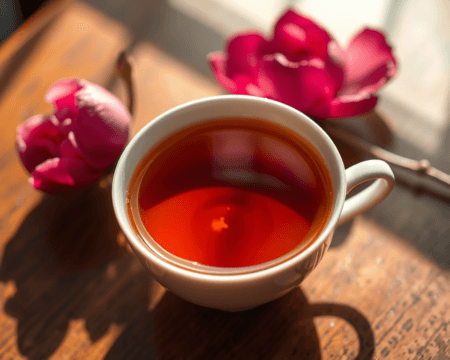You’re sitting there, craving a warm cup of tea, but the thought of caffeine keeping you up all night makes you hesitate. Enter decaf tea, your caffeine-free comfort with all the flavor and none of the jitters. But how’s it made? What’s the deal with decaffeination methods? And does it even taste good? Buckle up, because we’re about to take a deep look at how that soothing brew gets its caffeine-free status without losing its charm.
Key Takeaways
- Decaf tea can still pack a punch in flavor despite the removal of caffeine.
- Multiple methods exist for decaffeination, each impacting taste and quality differently.
- Eco-conscious consumers should consider the environmental effects of various decaffeination processes.
- Popular brands like Twinings and Bigelow offer unique blends of decaf tea, showcasing different methods and flavor profiles.
Understanding Decaffeinated Tea
What is Decaf Tea?
Let’s start with the basics. So, what is decaf tea? In simple terms, decaf tea is just like your regular cup, minus the caffeine content. You can find various herbal tea options as well as traditional tea types like black, green, and even oolong in decaf form. This makes it a popular choice for folks wanting to cut down on caffeine but still enjoy the ritual of tea drinking.
Now, while we all know that caffeine can give us that famous boost, it can also lead to jitters and sleepless nights. By switching to decaf, you can still soak in the health benefits—like antioxidants and hydration—without the buzz. What’s more, the difference in caffeine content can impact your tea blends. So, when people say decaf tastes different from regular tea, they’re not wrong.
Types of Tea Leaves Used for Decaffeination
Alright, let’s talk tea leaves! The variety of tea leaves that can undergo decaffeination are pretty fascinating. You can decaf black tea, green tea, oolong, and even delicate white tea. Each type has its own flavor profile, which can get altered during the decaffeination process.
Here’s the lowdown on some key players:
- Black Tea: Known for its robust flavors, this is where many popular decaf teas come from. Think of brands like Twinings which offer decaf Earl Grey or English Breakfast.
- Green Tea: Lighter and fresher, decaf green tea, such as Bigelow’s Decaf Green Tea, still brings that refreshing vibe.
- Oolong Tea: This unique blend is often less straightforward in flavor, but it can make for a gentle cup of decaf.
- White Tea: Soft and subtle, decaf white tea retains delicate flavors, making it a sweet option for sipping.
When choosing your decaf tea, it’s crucial to know how each leaf influences the flavor profiles post-decaffeination.
The Decaffeination Process
Overview of Decaffeination Techniques
Now we’re getting to the nitty-gritty! The decaffeination process involves removing caffeine from the tea leaves while keeping the essential flavors intact. But how’s it done? There are several methods, and they all have their pros and cons.
For example, the water processing method uses hot water to extract caffeine, which is then passed through charcoal filters. Say goodbye to unwanted caffeine, but hello to possible flavor loss!
Then there’s the carbon dioxide method. This high-tech approach is quite popular among top brands because it minimizes damage to flavor. Super cool, right?
Lastly, you’ve got ethyl acetate, sometimes dubbed the ‘natural’ caffeine remover since it’s derived from fruits. While labeled less artificial, it still raises eyebrows among health-conscious folks.
Popular Decaffeination Methods
Let’s break down some of these methods even further—because knowing is half the battle! Each of these methods has strengths and weaknesses, not just for flavor but also for health and environmental consciousness.
Water Processing:
- How It Works: Soak the leaves in water, then filter out the caffeine.
- Pros: Simple and safe.
- Cons: Might lose some subtle flavors.
Carbon Dioxide Method:
- How It Works: Uses CO2 under pressure to extract caffeine.
- Pros: Maintains flavor integrity; efficient.
- Cons: Costlier method, but worth it for quality.
Ethyl Acetate:
- How It Works: Tea leaves are soaked in this solvent to remove caffeine.
- Pros: Less rigorous processing; marketed as natural.
- Cons: Concerns over chemical residues persist.
Get the picture? Each method spins its own tale, and understanding them helps when choosing your next cup.
Pros and Cons of Decaffeination Methods
Environmental Impact of Decaffeination
Here’s something that’s not typically discussed—what about the environmental impact? Sustainable practices are buzzing in all industries, and tea’s not left out in the cold. From water usage to the chemicals involved, the impact varies by method.
The water processing method might seem friendly, but it uses a lot of resources. On the flip side, the carbon dioxide method is much more eco-friendly, using a closed-loop system that minimizes waste. If you’re one to care about your environmental footprint, consider brands that practice sustainability—like Numi Organic Tea, which keeps eco-friendliness at the forefront.
Taste and Quality Comparison
Now let’s address the elephant in the room: taste! The sensory experience of tea drinking is deeply rooted in flavor. There’s genuine debate about decaf and regular tea. Some people swear by the richness of an English Breakfast, while others argue decaf always falls short. Sure, you may have to adjust your taste buds, but quality decaf can still deliver flavor integrity.
Let’s look at Stash Tea’s Decaf Chai. Many consumers rave about its flavor and assert it’s just as impactful as its caffeinated counterpart. But opinions vary widely! A taste test or a tea tasting session with friends could help you decipher your own preferences.
Popular Brands and Their Decaffeination Processes
Overview of Leading Decaf Tea Brands
When it comes to popular brands making waves in the decaf tea world, a few stand tall. You’ve got big names like Twinings, Bigelow, and Stash leading the pack. Here’s a sneak peek:
| Brand | Decaf Products | Decaffeination Method | Price Range |
|---|---|---|---|
| Twinings | Decaf English Breakfast, Decaf Earl Grey | Ethyl Acetate | $6-8 per box |
| Bigelow | Decaf Green Tea, Decaf Lemon Ginger | Water Processing | $5-7 per box |
| Stash Tea | Decaf Chai, Decaf Mint Tea | Carbon Dioxide | $6-9 per box |
These brands not only offer variety but also explore fascinating blends that highlight their unique decaffeination strategies.
Consumer Perspectives on Decaf Tea Preferences
Let’s get real for a moment. What do consumers think? Surveys reveal that many tea drinkers are still wary of decaf teas, often associating the term with less flavor or quality. Yet, the health-conscious crowd, particularly millennials and Gen Z, are actively seeking alternatives.
Consumer feedback suggests a growing acceptance of decaf teas—those who once turned their noses up at it now find comfort in brands like Celestial Seasonings, with their wild flavors. It’s all about breaking stereotypes and opening minds, and hey, sometimes you just need to give it a shot!
Exploring the History of Decaffeinated Tea
Evolution of Decaffeination Techniques
The story of decaf tea isn’t just a new-age wellness trend. It has historical roots dating back over a century. In the early 1900s, German coffee merchants accidentally stumbled upon a method of decaffeinating tea while sourcing beans. This sparked a revolution—new processes, innovations, and a whirlwind of taste experimentation followed.
It’s fascinating to observe the transition from crude methods to sophisticated high-tech processes we see today! This evolution is essential for those who appreciate how far the tea industry has come in providing options that accommodate modern lifestyles—all while maintaining the love for tea culture.
The Cultural Significance of Decaf Tea
Decaf tea is more than just a beverage; it’s woven into the fabric of health-conscious culture. In Japan, for instance, tea ceremonies reflect a deep reverence for tea, and as more people embrace health trends, decaf options have begun to carve their niche in traditional practices.
Imagine this: sipping delicate cups of decaf after dinner with family or friends, enjoying the ritual without the fear of jittering through the night. It’s about balance. Decaffeinated tea can seamlessly fit into our lives, allowing us to savor that moment of mindfulness and connection.
The cultural significance is a beautiful reminder that, even without caffeine, tea continues to bring people together. Whether you’re steeping a mug for yourself or hosting a gathering, imagine being part of centuries of tradition that still thrives today.
Choosing decaf doesn’t mean sacrificing flavor or experience. It means embracing a new way to enjoy tea, one that resonates with your lifestyle while still honoring the art of brewing. So, the next time you reach for that teabag, consider exploring the flavorful world of decaf—you might discover your new favorite cup!
Frequently Asked Questions
What are the different methods of decaffeination for tea?
Tea can be decaffeinated using several methods, including the CO2 method, water process, and chemical solvents. Each method affects the flavor and quality differently, with some preserving more of the tea’s original taste than others.
Does decaf tea contain any caffeine at all?
Yes, decaf tea typically contains a small amount of caffeine, usually around 2-5 mg per cup. This is significantly lower than caffeinated tea, but not entirely caffeine-free.
Can I find organic decaf tea?
Yes, many brands offer organic decaf tea options. Be sure to check the packaging for certifications indicating it is both organic and decaffeinated to ensure you are getting a product that meets your preferences.
What flavors are common in decaf tea blends?
Decaf tea blends can feature a variety of flavors, including classic blends like Earl Grey and herbal infusions such as chamomile and peppermint. The flavor profiles often depend on the base tea and additional ingredients used in the blend.
Is decaf tea still healthy?
Decaf tea retains many of the health benefits associated with regular tea, such as antioxidants and vitamins. However, it may have slightly lower concentrations due to the decaffeination process.
How should I store decaf tea to maintain its quality?
To keep your decaf tea fresh, store it in a cool, dark place in an airtight container. Avoid exposure to moisture, heat, and strong odors to preserve its flavor and aroma.
Can decaf tea help with sleep issues?
Yes, decaf tea can be a good choice for those looking to unwind before bedtime. Herbal decaf teas such as chamomile or lavender are particularly known for their calming properties.
Are there any environmental concerns with decaffeination processes?
Certain decaffeination methods, particularly those using chemical solvents, can have negative environmental impacts. It’s advisable to choose teas processed using more eco-friendly methods, such as the water process or CO2 method, to minimize your footprint.
Which brands are known for high-quality decaf tea?
Popular brands known for their decaf tea include Twinings, Bigelow, and Celestial Seasonings. Each brand offers distinctive blends and flavor profiles catering to a variety of tastes.
Can I enjoy decaf tea the same way as regular tea?
Absolutely! You can enjoy decaf tea just like regular tea, whether hot or iced. Feel free to add milk, lemon, or sweeteners according to your personal taste preferences.
